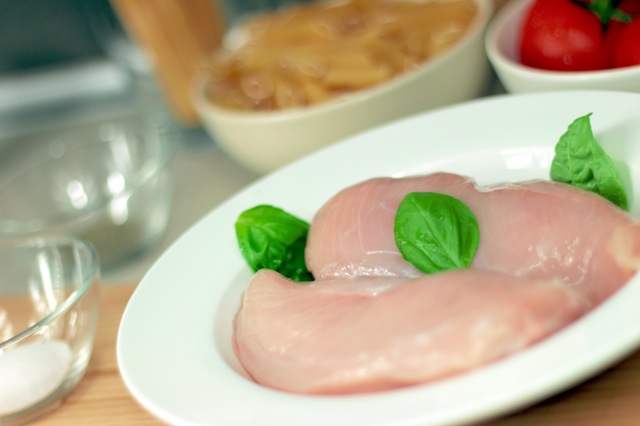By Julie Murphree, Arizona Farm Bureau
Americans ate an average of 117.2 pounds of fresh and processed fruit per person in 2013, down from a high of 131.4 pounds in 1999, according to the United States Department of Agriculture (USDA). Bananas and apples top the list of the most popular fresh fruits.
On the vegetables side of things, Americans consumed 48.4 pounds per person of potatoes and 30.8 pounds of tomatoes in 2013, according to the USDA. Half of potato consumption was fresh, while 59 percent of tomatoes consumption was canned.

So, we’re consuming a lot of fruits and vegetables and probably should be consuming even more.
But with increased consumption of our fresh produce has come increased outbreaks of food-related illness associated with these foods, spurring increased concern about the safety of fresh fruit and vegetables.
According to the Center for Disease Control (CDC) and food experts, sporadic cases and small outbreaks in the home are far more common than recognized outbreaks that have come from the production and processing of fruits and vegetables. So our number one defense against foodborne illness is safety measures in the home.
The list of safety tips produced by the Council for Agriculture Science & Technology (CAST) below gives you and me a series of strategies to make sure we’re properly handling our fruits and vegetables once we get them home.
What are Producers and Processors Doing to Protect Us?
But what are fruit and vegetable growers, including processing plants doing, to ensure safety? The fresh produce production and processing industry implemented Good Agricultural Practices to decrease the risk of in-field contamination. These practices include proper site selection, water quality testing, runoff control, manure and compost management, domestic animal and wildlife control, worker health and hygiene monitoring, field sanitation of harvest equipment, and safe harvesting practices.
In addition, packing house operators and produce processors use Sanitary Operating Procedures and Good Manufacturing Practices, which are common to the entire food processing industry and including sanitary design of equipment and facilities, pest control, facility sanitation, worker health and hygiene monitoring and temperature control. Sanitizing washes or dips, which rely on chlorine or other sanitizers to kill harmful microbes, are used. Many producers and processors also have developed or are developing systems to trace and recall products as well as detailed crisis management and farm security plans.
Additionally, the federal government a few years ago passed the Food Safety Modernization Act (FSMA), the most sweeping reform of our food safety laws in more than 70 years signed into law by President Obama in 2011. It aims to ensure the U.S. food supply is safe by shifting the focus from responding to contamination to preventing it. The FDA released the final rule on amendments to registration of food facilities just this month and by August will have a webinar to present key pieces of the final rule.
To understand how important food safety is to large farms that have more at stake, while you might let your pet roam around in your backyard garden even while you harvest, today’s large produce growers fence off fields, regularly monitor their fields and rope off contaminated areas and harvesters are not allowed to harvest that crop area.
But, the best defense against food contamination is found in the home. Remember to practice regular sanitation when preparing food. The tips below can help prevent food-related illnesses.
Best Practices for Consumers when Handling Fruits and Vegetables
Action
- Wash hands
- Clean and sanitize utensils and facilities
- Clean fresh produce properly
- Avoid cross-contamination of fresh produce
- Cook produce to a safe temperature, if appropriate
- Refrigerate cut produce properly
Method
- Wash Hands
- Use warm water and soap
- Wash at least 20 seconds before and after handling fresh produce
- Clean and sanitize utensils and facilities
- Before and between preparing each food item, wash cutting boards, dishes, utensils, and counters with hot, soapy water
- Sanitize with diluted bleach solution or kitchen disinfectant after cleaning—mix 1 tsp. household bleach with 1 qt. water
- Do not mix soaps or other cleansers with a chlorine-based sanitizing solution
- Clean fresh produce properly
- Rinse thin-skinned produce with cool water
- Rub or scrub firm-skinned produce with a soft-bristled brush while rinsing
- Special products for cleaning produce may be effective; the evidence is not conclusive, however, and they are not recommended
- Drying produce after washing may decrease bacteria levels
- Pre-washed produce does not benefit from being rewashed; risk of cross-contamination during rewashing may exceed safety benefits obtained
- Avoid cross-contamination of fresh produce
- Use separate cutting boards for fresh produce and for raw meat, poultry, and seafood
- Do not place produce on counters that have not been cleaned and sanitized
- Use only clean, dry containers to serve or store fresh produce
- Cook Produce to a safe temperature, if appropriate
- If produce is normally cooked, cook sufficiently to kill pathogenic microorganisms
- Cook produce to 57º C (135º F)
- Refrigerate cut produce properly
- Refrigerate produce within 2 hours if kept at room temperature
- Refrigerate produce within 1 hour if kept at temperatures of 32º
C (90º F) or higher
- Proper refrigeration becomes more critical after produce has been peeled or cut—cut melons and tomatoes are regulated as potentially hazardous foods
- Keep refrigerators at 4º C (40º F) or colder to limit potential pathogen growth
The key takeaway here is that everyone, especially you and I, have a role to play in preventing food-related illnesses. In the home, we have control.

